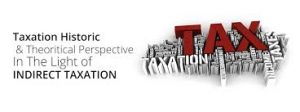Economic Profile
Uttarakhand is one of the fastest growing states of the India. The State’s economy grew at an annual growth rate of over 10 percent during the last decade. In terms of economic growth, the state’s performance has been above the national average from 2002-03 to 2010-11. The high growth led to rapid increase in state’s per capita income, which increased from ` 27,726 in 2002-03 to ` 79,940 in 2011-12. The per capita income has increased nearly by 3 times as compared to 2004-05 faster than the growth rate of the national per capita income. In the initial years of the last decade per capita income of the state was slightly above the national per capita income. By 2011-12 the gap has increased to almost 30 per cent in favour of Uttarakhand. The share of the primary sector in total GSDP was about 26 percent in 2002-03, which has continuously declined to 11.22 percent in 2011-12. The share of industrial sector in total GSDP has increased from 23 percent in 2002-03 to 35 percent in 2011-12. The share of tertiary sector has, however, remained almost constant over the period.
Human Development
In terms of human development, Uttarakhand has done well as reflected from the state’s performance in Human Development Index (HDI). HDI of Uttarakhand has improved from 0.339 in 1999- 00 to 0.499 in 2007-08. Its rank among states also improved from 13th to 10th over the period. It has recorded highest increment (44.54 percent) in its HDI among all states during 1999-00 and 2007-08.
Trends in Own Tax Revenue
OTR increased more than six times in the last decade-from ` 894.7 crore in 2001-02 to ` 5615.6 crore in 2011-12. The CAGR of OTR was 18.84 percent during the period of 2001-02 to 2005-06, but declined marginally to 17.44 percent in the period 2006-07 to 2011-12. For the entire decade the growth rate was 17.69 percent. Growth rate of different taxes has, however, varied from tax to tax. Sales tax increased at a CAGR of 22.31 percent for the entire period. On the other hand, collections from state excise had a sluggish growth of 5.98 percent during the period 2001-02 to 2005-06, which improved to 17.74 percent in later half of the period under study (2006-07 to 2011-12). Total tax revenue increased from ` 1246.98 crore in 2001-02 to ` 3645.67 crore in 2006-07 and further to ` 8481.66 crore in 2011-12 showing an average annual compound rate of growth of 19.40 percent.
The Uttarakhand government is able to realize its tax potential for most of the years. Even in the years in which actual tax revenue is less than taxable capacity, it is not
very significant. Except 2004-05, the variation is not more than 5 percent. There is scope for increasing the Tax-GSDP ratio to at least 10 per cent. Following suggestions are given in this respect:
- Policy inconsistencies and reversal in rates under populist considerations should be discouraged.
- There is a large evasion in case of most of the taxes. Informed guess of departmental officers puts the evasion in case of VAT at 40 per cent. There is large scale undervaluation in sale of property to avoid stamp duty. A high level committee should be appointed to examine the extent and methods of tax evasion and suggest measures for checking evasion.
- A large number of private cars are being used as taxis in an illegal manner. Strong administrative measures should be taken to check evasion of taxes along with imposition of high penalty in case of default.
- Tax machinery should be strengthened and modernized. The computerization of tax collection should be introduced. Adequate staff should be appointed and vacant positions should be filled. Vigilance system should be strengthened.
- Tax rates should be rationalized. The practice of excluding VAT-able items to suit some sectors of the economy should be discontinued. There is no need to give exemption to several items as these benefit the traders only and not the artisans and workers. The policy of charging concessional rates to the many sectors should also be avoided.
- Tourism is a lucrative sector for the state tax revenue. Government should try to tap this sector. Strict measures should be taken to bring motels and on the way small eating joints/hotels into the tax net.
- The tax base should be expanded. Grand Parties, Resorts, Marriage halls and lawns and lavish expenditure on weddings should be brought under tax net.
- The state government has not been levying some taxes like profession tax. These taxes should be imposed in the state.
- There are huge arrears of tax and non-tax revenue. Total arrears were reported at `1249.80 crore at the end of the fiscal 2010-11, out of which ` 254.99 crore (20.40 percent) of arrears was more than five years old. Nearly, 71 percent of revenue in arrears was on account of Taxes/VAT on Sales and Trades, etc. Efforts should be made to recover these amounts by expediting the legal proceedings and administrative orders.
- The frequent alterations in tax rates, base or the structure of incentives and tax policy objectives should be genuinely done away with.
